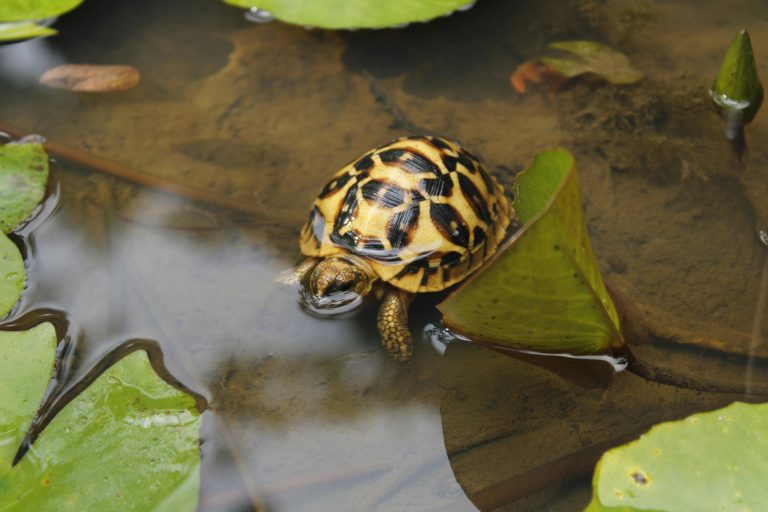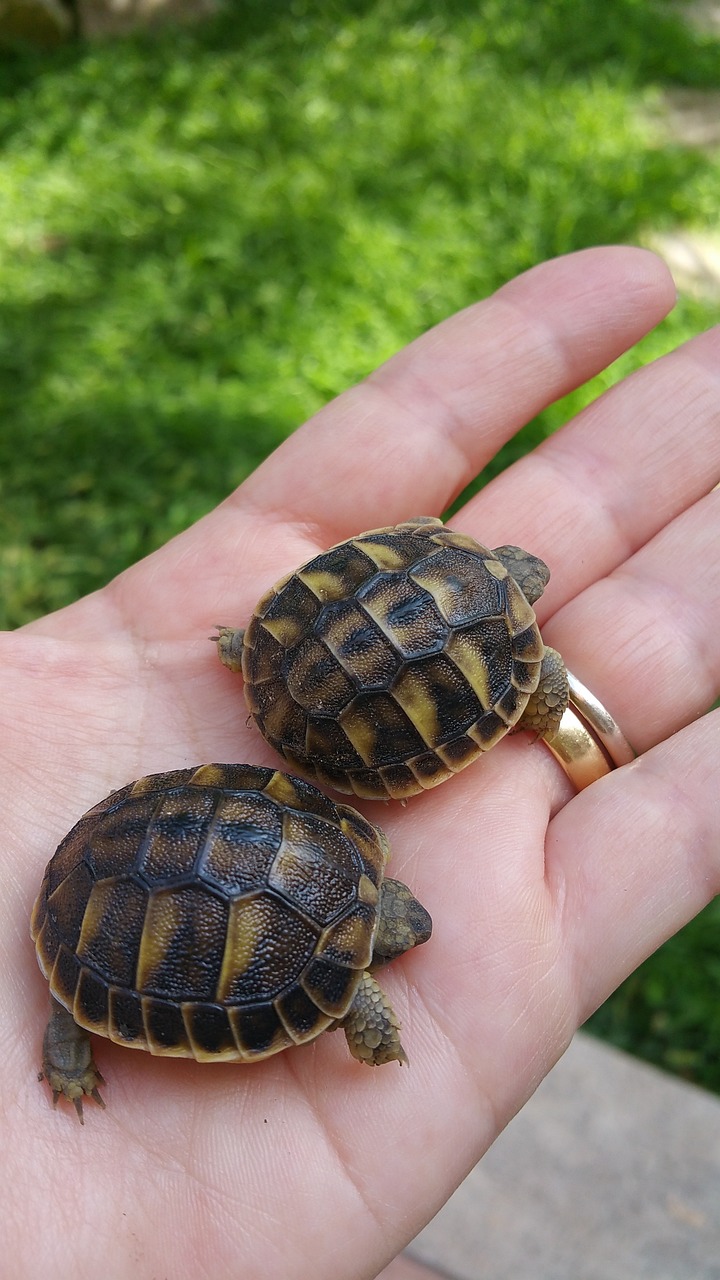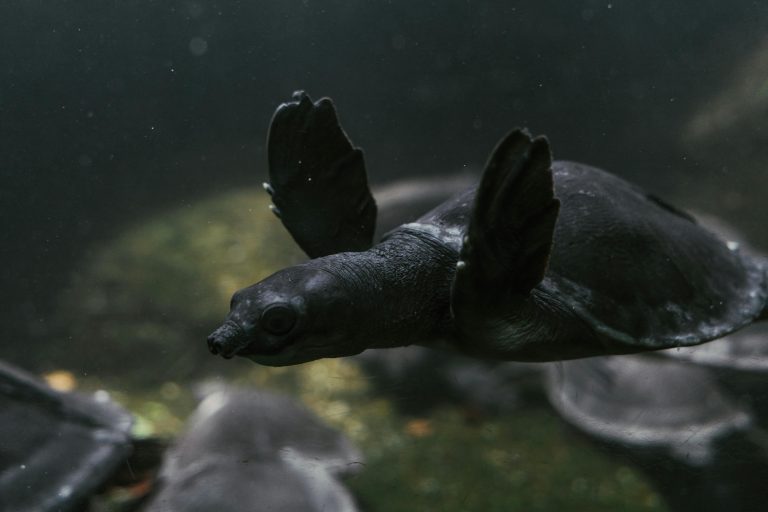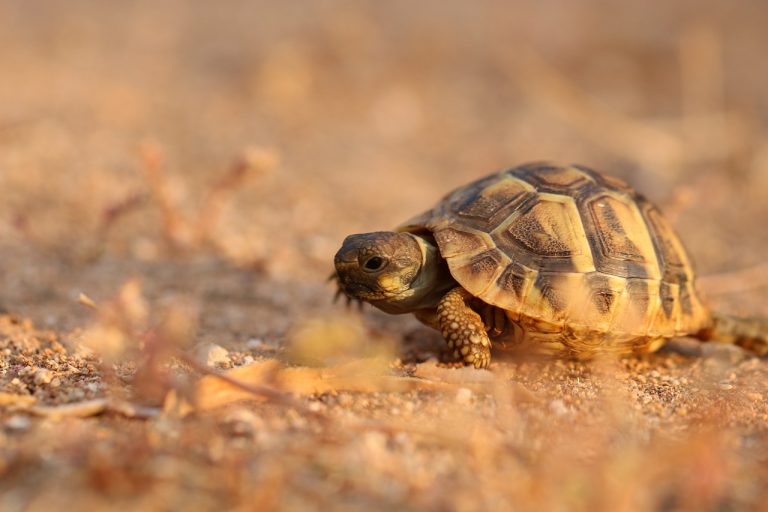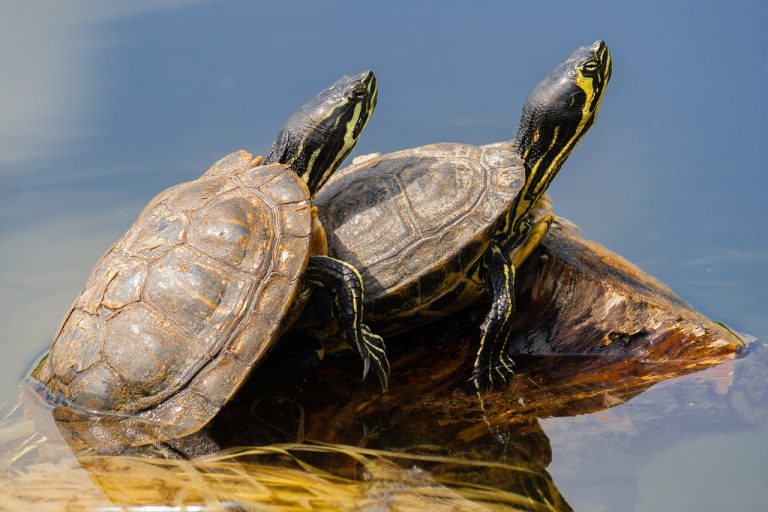Turtle Vs. Tortoise Vs. Terrapin [Difference Chart]
Absolutely, the distinctions between turtles, tortoises, and terrapins are fascinating and worth exploring further.
While all three belong to the Chelonian group, each species has evolved to thrive in different habitats and have varying dietary preferences.
Tortoises are primarily herbivores and are adapted to living on land. They have sturdy, dome-shaped shells and thick, column-like legs, which are ideal for traversing rugged terrain. Their diet consists mainly of vegetation, and they can often be found grazing in grasslands or scrublands.
Turtles, on the other hand, are more versatile in their diet, being omnivores. They are well-suited to aquatic life, with streamlined bodies, webbed feet, and paddle-like limbs that enable them to navigate through water with ease. Turtles can be found in various aquatic habitats, from freshwater ponds and rivers to saltwater seas and oceans.
Terrapins, meanwhile, are a type of small turtle typically found in freshwater habitats, such as marshes, swamps, and estuaries. They have adapted to both land and water but tend to inhabit brackish or freshwater environments. Terrapins have a more varied diet than turtles, feeding on both plant matter and small aquatic animals.
These distinctions in habitat preference and dietary habits have influenced the evolution of each species, leading to unique adaptations in their physical characteristics. By understanding these differences, we can better appreciate the diversity and complexity of the Chelonian group and the incredible variety of life found within it.
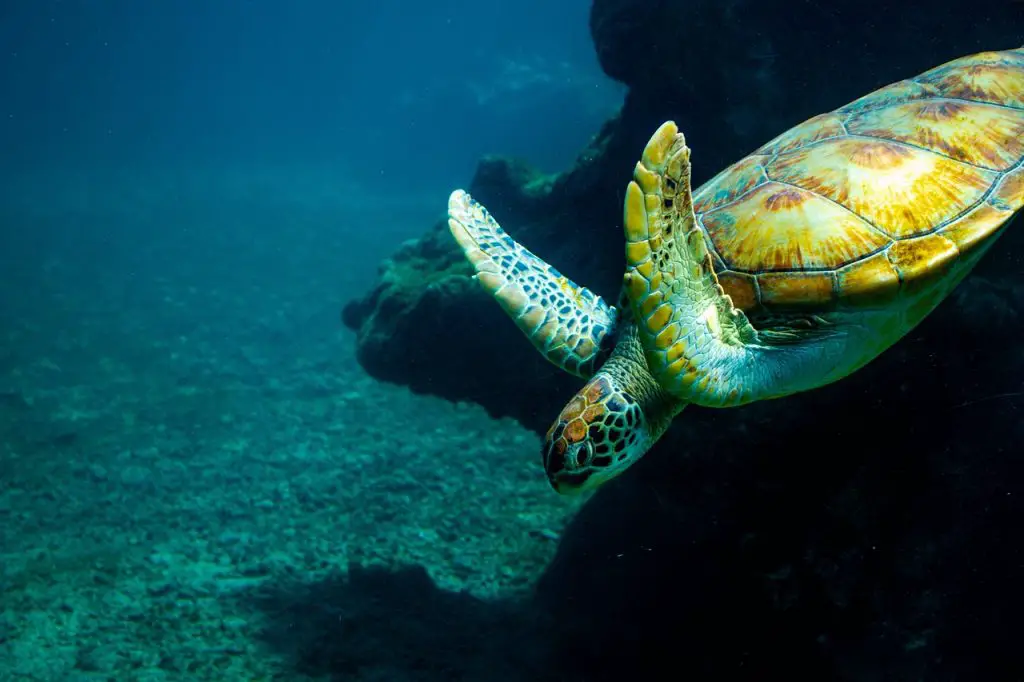
What Do Turtle, Tortoise, And Terrapin Mean?
It’s true that the distinction between turtles, terrapins, and tortoises can sometimes be blurred due to regional variations in terminology. In some parts of the world, the term “turtle” is used as a broad umbrella term to encompass all members of the Testudines family, including turtles, tortoises, and terrapins. This linguistic convenience has led to misconceptions about the differences between these species.
However, scientifically speaking, there are clear distinctions between turtles, terrapins, and tortoises. To make it easier to understand, let’s break down some key differences between these fascinating reptiles:
1. Habitat:
- Turtles: Primarily aquatic, inhabiting large saltwater bodies like seas and oceans.
- Terrapins: Semi-aquatic, dwelling in smaller freshwater or brackish bodies of water such as ponds, rivers, and marshes.
- Tortoises: Land-dwellers, unable to swim and preferring terrestrial habitats.
2. Food Habit:
- Turtles and Terrapins: Omnivorous, consuming both plant materials and animal protein in their diet.
- Tortoises: Strictly herbivorous, relying solely on vegetation to sustain and build their bodies.
3. Shell:
- Turtles: Often possess shells that are flat and oval-shaped.
- Terrapins: Shells are spherical and somewhat flattened.
- Tortoises: Shells are rounded, tall, and thick.
4. Limbs:
- Turtles: Lack feet, instead possessing flippers for swimming.
- Terrapins: Have short, stocky legs with webbed toes and sharp claws.
- Tortoises: Sport strong, powerful legs that protrude from their torso at an angle.
5. Lifespan:
- Turtles: Can live for 70–80 years in the wild on average.
- Terrapins: Typically have a lifespan of a few decades.
- Tortoises: Have an impressive lifespan, with some individuals living over 100 years, and a median age of 80.
By understanding these differences, we can appreciate the diverse adaptations and lifestyles of turtles, terrapins, and tortoises, and dispel any misconceptions about their classification within the Testudines family.
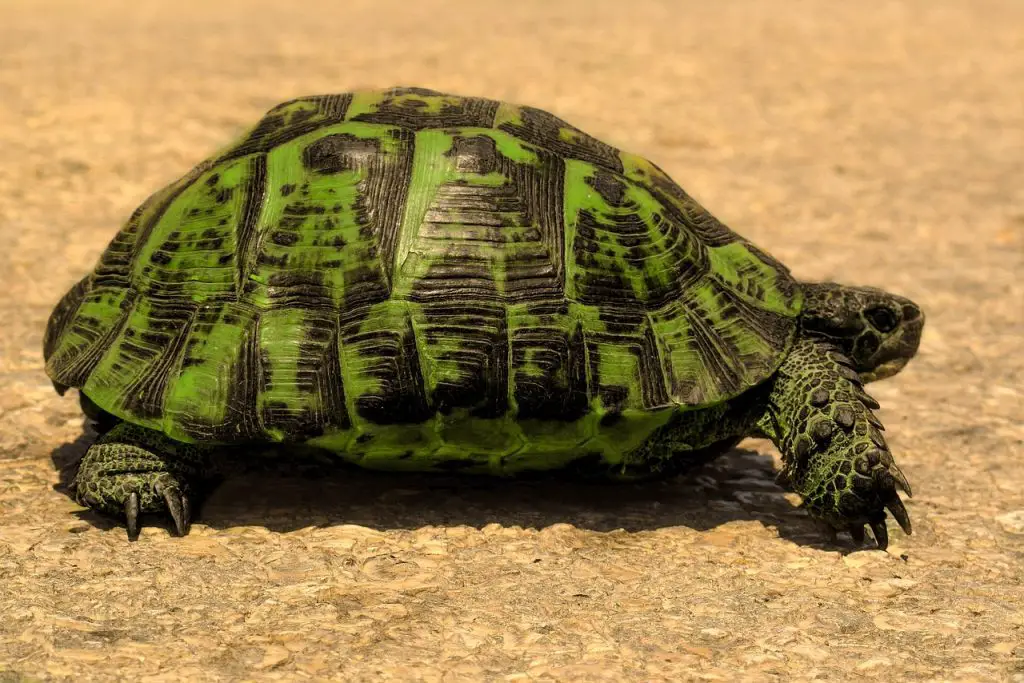
Turtles:
Ocean-dwelling turtles are true marine marvels, spending the bulk of their lives gracefully navigating the depths. Their sleek, smooth shells are tailored for hydrodynamic efficiency, aiding them in swift and agile swimming. Among these aquatic giants, the leatherback turtle reigns supreme, boasting the title of the largest marine turtle species.
What sets the leatherback apart is its unique leathery carapace, distinct from the bony shells of its counterparts. A fully grown leatherback can tip the scales anywhere from 250 to a whopping 700 kilograms. Other renowned members of the turtle family include the hawksbill sea turtle, the green sea turtle, and the awe-inspiring leatherback.
Tortoises:
In stark contrast to their aquatic cousins, tortoises are terrestrial titans, thriving in arid, sun-soaked landscapes. With domed carapaces and sturdy columnar feet armed with sharp claws, tortoises are built for life on dry soil. While they may struggle in the water, they occasionally partake in a leisurely bath to keep clean and hydrated.
Like their ocean-dwelling counterparts, tortoises boast impressive size and longevity. The Aldabra tortoises of Seychelles and the giant tortoises of the Galapagos and the Indian Ocean command attention with their immense stature, reaching lengths of up to 1.3 meters and weights of 417 kilograms.
Terrapins:
Terrapins, the petite players of the turtle world, carve out their niche in both freshwater and saltwater habitats. Often found nestled in temperate or tropical forests near water bodies like rivers, lakes, and streams, these diminutive turtles bring a touch of charm to their watery abodes.
The term “terrapin” traces its origins to the Algonquian phrase “torope,” meaning “small turtle” in Native American languages. Among the notable terrapin varieties are the red-eared sliders and yellow-bellied sliders, cherished for their vibrant hues and spirited demeanor.
While they may not boast the size of their turtle and tortoise cousins, some terrapins, like the snapping turtle, can still grow to impressive lengths, reaching over 60 centimeters and tipping the scales at a formidable 80 kilograms. Beware, though, for aggressive terrapins wield razor-sharp claws and powerful jaws capable of inflicting serious harm with a single snap. So, tread lightly and give these spirited creatures the respect they deserve.
What Is The Difference Between Turtles, Terrapins, And Tortoise?
Distinguishing between turtles and tortoises isn’t rocket science; it often boils down to observing their natural habitats. By paying attention to where they dwell, one can quickly discern the differences between these fascinating creatures.
- Habitat:
- Tortoises: These land-loving creatures thrive in dry, arid climates and have adapted to terrestrial life. You won’t find them taking a dip in deep waters as they lack the ability to swim.
- Turtles: With their aquatic lifestyle, turtles spend the majority of their lives in water, surfacing on land only to lay eggs. They traverse oceans and seas, feeding, mating, and ultimately meeting their end in the water.
- Terrapins: These semi-aquatic dwellers inhabit both land and water, preferring the moist environs of ponds, rivers, and estuaries. While they spend much of their time in water, they occasionally venture onto dry ground for sunbathing or seeking new watering holes.
- Food Habit:
- Tortoises: Herbivores by nature, tortoises subsist solely on plant-based diets, munching on whatever vegetation is available in their surroundings.
- Turtles and Terrapins: Both turtles and terrapins are omnivores, relishing a diverse diet that includes both plant and animal matter. While young turtles and terrapins require more protein for growth, adults switch to a predominantly plant-based diet.
- The Shells:
- Tortoises: Their shells are tall, thick, and spherical, providing ample protection and allowing them to withdraw their entire bodies within.
- Turtles: Characterized by broad, oval-shaped shells that facilitate swift movement through water. However, they sacrifice the ability to retract their heads and limbs fully into their shells for increased speed.
- Terrapins: Sporting slightly elongated spherical shells, terrapins strike a balance between protection and agility, enabling them to maneuver through water efficiently while still affording some defense against predators.
- The Limbs:
- Tortoises: Possessing large, powerful legs and stocky bodies, tortoises are well-equipped for terrestrial locomotion, navigating diverse landscapes with ease.
- Turtles: Flippers take center stage for turtles, serving as their primary means of propulsion in water. While lacking toes, their flippers are adept at digging nests for egg-laying.
- Terrapins: With short, stocky legs and webbed toes, terrapins strike a balance between land and water, utilizing their claws for climbing and swimming efficiency.
- Lifespan:
- Tortoises: Known for their longevity, tortoises can live well beyond 80 years, with some individuals surpassing the century mark.
- Turtles: Most turtle species boast an average lifespan of 70–80 years, although threats like climate change can impact their longevity.
- Terrapins: While not as long-lived as tortoises, terrapins can still enjoy a decent lifespan of 20 to 40 years in captivity, with proper care potentially extending their years by a decade or more.
By understanding these key differences in habitat, diet, shell structure, limbs, and lifespan, one can easily discern between turtles, tortoises, and terrapins, gaining a deeper appreciation for the remarkable diversity within the Chelonian family.
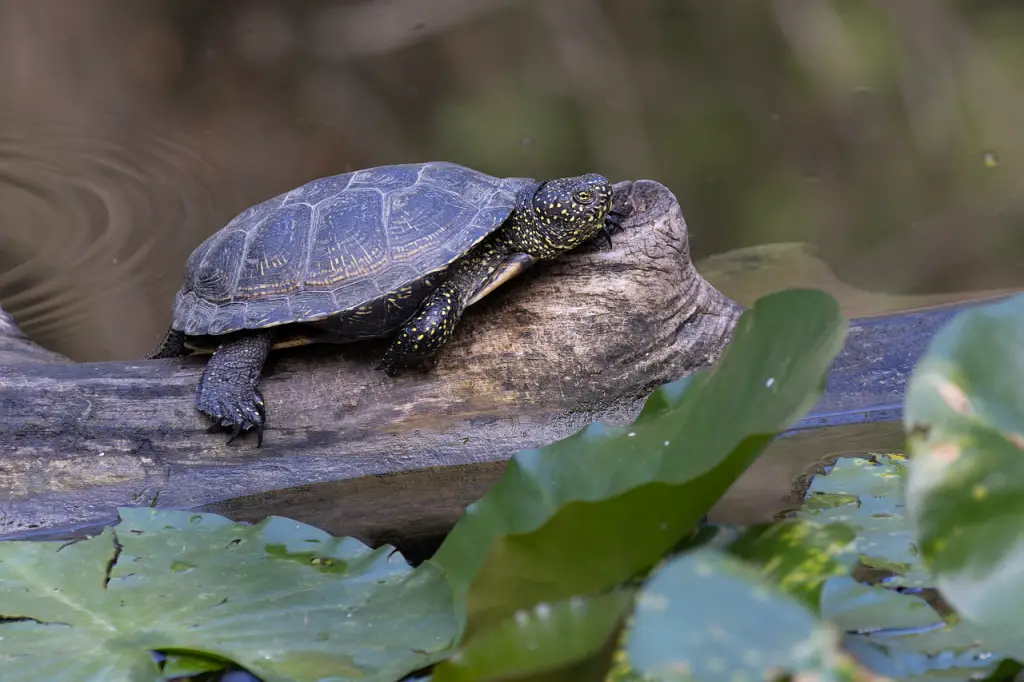
How Tell If It’s A Turtle, Terrapin, Or Tortoise?
Identifying turtles, terrapins, and tortoises can be an engaging endeavor, requiring keen observation and attention to detail. Here’s a step-by-step guide to help you distinguish between these intriguing reptiles:
- Analyzing the Environment:
- Time Spent Near Water: Observe the reptile’s habitat preference. If it spends most of its time on land, it’s likely a terrestrial species, indicating a tortoise. Terrapins, on the other hand, may frequent wet areas like marshes due to their preference for brackish environments.
- Identifying the Physical Type:
- Feet: Examine the structure of the reptile’s feet. Flattened, webbed feet are indicative of species adapted for swimming, such as turtles and terrapins. Tortoises, with their stubby, flat toes, are better equipped for terrestrial locomotion.
- Shell: Pay close attention to the shell. While all three reptiles have scaly skin and hard shells, turtles typically have bony shells, except for leatherback sea turtles, which have softer, leathery shells. Tortoises’ shells are often more rounded and dome-shaped compared to the flatter shells of turtles and terrapins.
- Keeping an Eye on Their Actions:
- Diet: Consider the reptile’s dietary preferences. Tortoises primarily consume grasses, bushes, and even cactus, indicative of their terrestrial lifestyle. In contrast, turtles and terrapins have a more varied diet, including a broad range of foods found in their aquatic and semi-aquatic habitats.
By following these steps and carefully observing the environment, physical characteristics, and behaviors of the reptile in question, you can confidently identify whether it’s a turtle, terrapin, or tortoise. Enjoy the adventure of discovering these remarkable creatures in their natural habitats!
Is Terrapin A Turtle?
Comparing a terrapin to a turtle may seem challenging at first glance, but in essence, a terrapin is indeed a type of turtle.
While turtles typically thrive in various aquatic environments, terrapins have adapted to inhabit freshwater habitats such as lakes and streams, with some species even tolerating brackish water conditions in certain circumstances.
In terms of size, terrapins tend to be smaller compared to other turtle species. However, it’s important to note that there isn’t a universally accepted definition of what constitutes a terrapin, and not all terrapin species share strong similarities with one another.
The term “terrapin” is believed to have been borrowed from North American vernacular by British colonists during the period of exploration and settlement in America. This adoption of the word ensured its continued usage in modern English, albeit with some regional variations and interpretations.
Before You Go
Absolutely! While turtles, tortoises, and terrapins all belong to the same family, their unique habitats and adaptations set them apart, making each one a fascinating creature to study.
By understanding the differences between these remarkable reptiles, we gain valuable insights into the diverse ways in which animals adapt to their environments and thrive in various ecosystems.
I’m delighted that this tutorial has shed light on the distinctions between tortoises, turtles, and terrapins for you. Exploring the intricacies of the natural world is always a rewarding journey, and I’m glad to have been a part of your learning experience. If you have any more questions or need further clarification, feel free to ask!
